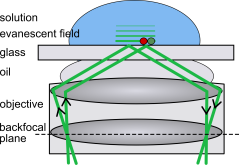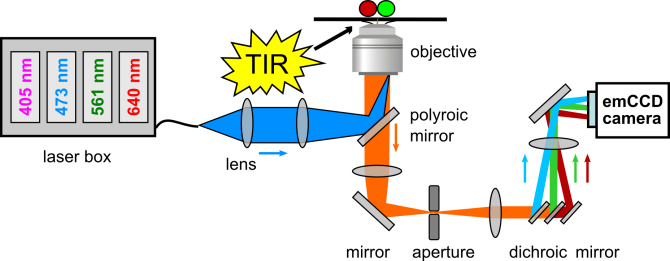
Equipment
Total internal reflection fluorescence microscopy (TIRF)
Dynamics and interactions of labelled molecules in the plasma membrane of cells (that adhere to the glass surface) can be imaged with high sensitivity by TIRF microscopy.

In TIRF microscopy the laser light is focussed into the rim of backfocal plane of the objective in a way that the laser light is totally reflected at the glass/ water interface. An evanescent field is created whose intensity decays within a few hundred nanometers. Thereby, only a small volume is illuminated within the solution. The striking feature of TIRF is the possibility to excite fluorophores close to the surface over an area of roughly 50 by 50 micrometer and image the fluorescence using an emCCD camera. In contrast to confocal microscopy, which allows only the detection of one molecule at a time, we can detect hundreds of molecules in parallel with TIRF microscopy. The setup in Wageningen uses a four-colour laser engine and a three-channel detection as shown below.
